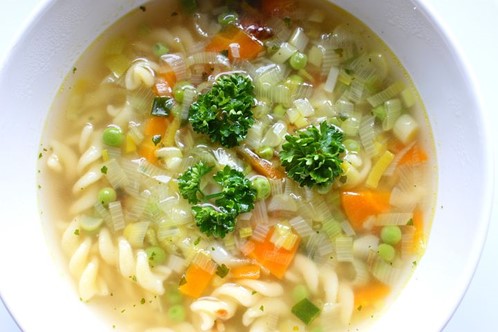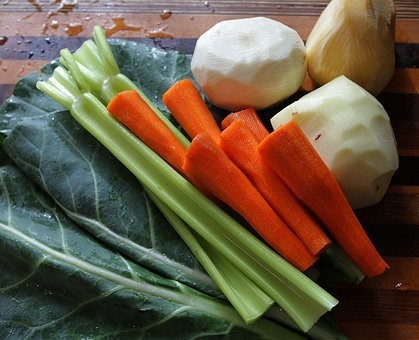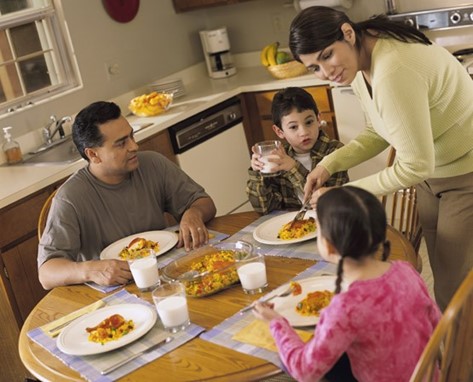Food Waste
By: Glenda Wentworth, Family & Consumer Science Extension Agent, Eagle County
How much food goes to waste in your home? How do you know? Have you ever kept track of the amount of food you throw away? I tend to think about food waste as tossing dollar bills into the trash whenever I throw food away.
Food waste is a problem in the United States. According to the Food & Drug Administration (FDA), it is estimated between 30 – 40% of the food grown, processed and transported is thrown away. Most food waste is from food spoiling before we eat it, or we for-get to eat the leftovers after cooking. Most of this food is going into landfills, meaning food waste not only in-creases the money we spend on food, it is also bad for the environment. Reducing food waste can help your family save money.
Tips to keep food waste to a minimum in your home: Preplan your meals and snacks for the following week. Check the pantry and fridge to see what items you already have. Write your shopping list, then only buy what is on your list.
- If purchasing in bulk, make sure you plan how to use all of it before it spoils. Especially consider those perishable foods like fresh fruits, vegetables and dairy that have a short shelf life.
- Make sure you are storing your food safely. Remember to refrigerate perishable foods and/or leftovers within two hours to keep food safe. The temperature of your fridge should be 40°F-33°F to keep foods safe. Keep raw meats on a dish or in a container to prevent juices from leaking and contaminating other food. Store raw meat on the bottom shelf of the refrigerator.
- Freezing surplus food is a simple way to store foods safely and to keep them from going bad. Use freezer grade bags or containers to insure quality. Label items to remember what is in the container and how long it has been in the freezer. The freezer temperature should be 0°F of below.
- Plan and schedule a leftover meal on your menu. Make use of leftovers in creative ways such as soups and stews. Create new dishes and snacks with leftovers or items you think will go bad if not eaten soon.
- Manufacturers’ labels can be confusing. They provide dates to help us decide when food is of the best quality. Federal Law does not require a date on food labels that indicates the product’s safety (except for infant formula).
- Here are some examples of commonly used phrases:
- “Best if used by” recommends when a product will be of best flavor or quality. This is not a safety date.
- “Use by” applies to the last date recommended for the use of the product while at peak quality. It is not a safety date except for when used on infant formula.
- “Sell-by” date tells the store how long to display the product for sale. Purchase the product before the date expires.
- “Freeze-by” date indicates when a product should be frozen to maintain peak quality. It is not a purchase or safety date.
- Here are some examples of commonly used phrases:
- Stay organized. Know what food you have on hand and what needs to be eaten first to prevent food waste.
- Dish up the appropriate amount of food for your children. Start with small portions. They will request more if they are still hungry.
- If you have non-perishable food that your family will not eat, donate it to a Food Pantry.
Let’s Talk
Discuss with your children why it is important to your family to not waste food. Then discuss some strategies that your family can use. Children can help you have a cook off to create the best dish made with leftovers. Have a friendly competition to see how long your family can go without discarding any food.
Recipe for Health
Simple Leftover Soup Recipe
Ingredients:
- Protein: use leftover beef, chicken, ham hock, tofu and/or beans.
- Vegetables: canned tomatoes, canned tomato sauce, produce such as onions, carrots, celery, green beans, potatoes, cabbage, peppers, corn, mushrooms or whatever you have on hand. Chop vegetables up into small chunks. A bag of frozen vegetables is also a convenient ingredient.
- Grains: leftover brown rice, barley, pasta, or your favorite grain.
- Broth: prepare your own or use low-sodium vegetable or chicken broth.
- Seasonings: oregano, thyme, basil, garlic, and black pepper to your taste.
Instructions:
- Combine the protein, vegetables, broth and seasoning in a large pot.
- Bring to boil, lower heat, and then allow to simmer for 1 – 2 hours.
- Add your favorite grain or pasta and cook on high heat for an additional 20 – 25 minutes until grain or pasta is tender.









